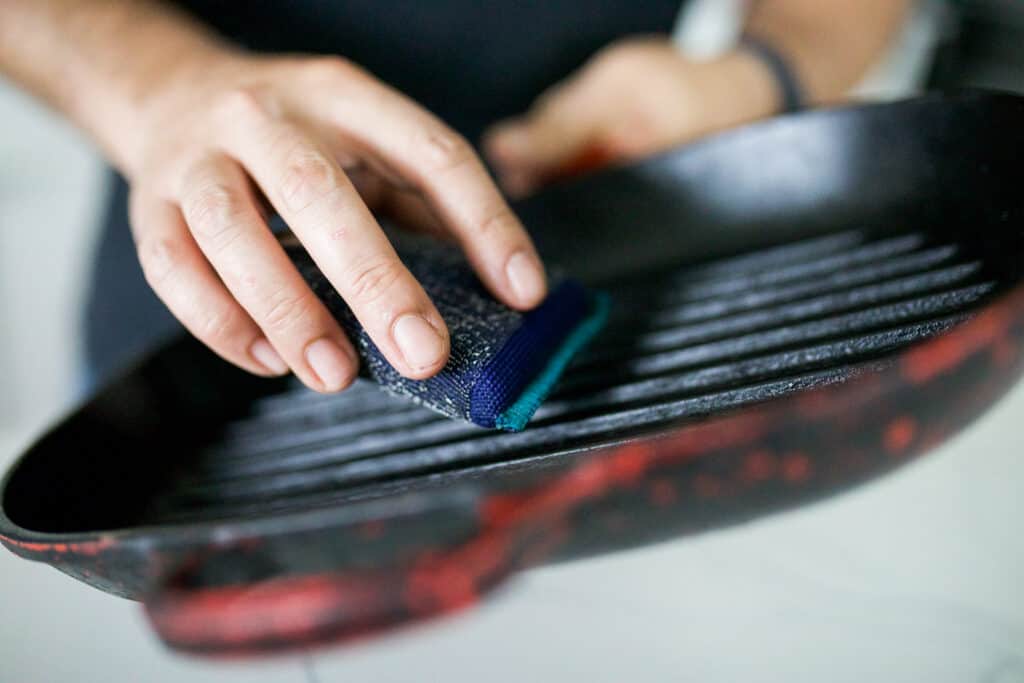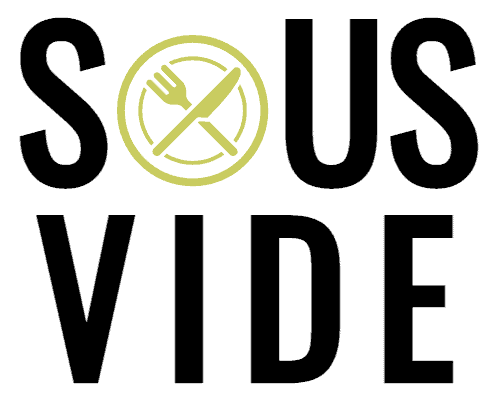If you’re a glass stove top user, you might think that the wonderful world of cast iron cooking just isn’t for you. But that’s not the case. You can use cast iron on a glass top stove!
Though it is possible to use cast iron on a glass cooktop, you’ll have to be mindful of the best ways to protect the fragile range. Fortunately, there are steps that you can take to protect your glass top stove so that it doesn’t end up damaged by heavy cast iron.
With proper usage, care, and maintenance, you can keep your stove looking like new for years to come.
In this article, we’ll discuss how to protect your glass-top stove so that you can safely and efficiently use cast iron cookware in the kitchen.
Table of Contents
7 Ways To Protect Glass Top Stoves From Cast Iron
Using a cast iron skillet on a glass top stove is perfectly safe if done correctly. Even so, it’s essential to be cautious and take certain precautions to prevent damage to the stove. Here are seven ways you can protect your glass-top stove when cooking with cast iron.
1. Keep it clean
One of the easiest steps that you can take to protect your glass top stove is to ensure that your cast iron is sparkling clean. Any bits of food, debris, or sticky seasoning that remain on the bottom of your cast iron can scratch the surface of the glass.
Always wash your cookware thoroughly before using it. Make sure that the cast iron is properly seasoned and not sticky and that there aren’t any built-up carbonization streaks on the bottom. These black marks can smear onto and stain the glass top.

2. Use smooth-bottomed cast iron
Thoroughly cleaning your cast iron will go a long way to create a smooth surface that will prevent scratching your glass top. However, it’s also important to inspect the bottom of your cookware for any chips, cracks, bumps, or uneven edges that could scuff the glass.
If you run your hand along the bottom of your cast iron and can feel any irregularities, the glass top will certainly feel them as well. You can reseason the pan a few times to build up a thick, non-stick, and smooth bottom. But it might be time to invest in some new cookware. In the long run, that investment could protect you from the costly repair or replacement of the stovetop.
3. Lift, don’t slide
We’ve discussed this before, but the best way to protect your glass top stove when using cast iron is to avoid sliding the cookware across the glass. Sliding or skidding the cast iron across the stovetop creates scratches and can damage the heating elements.
Instead, try lifting the cast iron and gently placing it onto the stovetop. Follow this same practice when removing or transferring the cookware to another burner.
4. Don’t drop it
Cast iron is hefty, so don’t drop it onto your glass top stove. Dropping or placing it too roughly can cause the glass to crack or shatter.
When moving the cast iron, lift or place it with two hands for more control. Plus, it will ensure that you can carefully and gently disperse the weight of the cookware across the glass top.
5. Use caution with high heat
Cast iron is terrific because it evenly retains heat at high temperatures. But this can become a problem when cooking on glass stove tops.
Heavy cast iron can trap heat between the cookware and the glass stove top. Super high temperatures will shorten the lifespan of the heating elements within the stovetop. Plus, it can damage the surface of the glass.
Since cast iron conducts heat well, you don’t need to cook with as high heat as you would with other cookware. So, crank the heat to medium or medium-low, and you’ll be good to go.
6. Ensure that the dimensions match up
Even heat distribution is crucial to protecting your glass cooktop. The glass can crack or shatter if it’s too hot in one area and cold in another. So, it’s crucial that the cookware isn’t more than 1-in larger than the burner.
7. Invest in a heat diffuser
A heat diffuser is a flat, metal disk that you’ll place between the glass stove top and the cast iron cookware. Its design distributes heat evenly and prevents hotspots from forming. All in all, the diffuser will help protect the glass surface from damage.
The intense heat cast iron generates can cause the glass stovetop to crack or break. Damage can also happen when moving the cookware across the surface of the stove top.
A heat diffuser can help mitigate these risks by evenly dispersing the heat. It’ll also reduce the chance of hotspots forming and protect the surface from scratches.
What Else Can Ruin a Glass Stove Tops?
Glass top stoves can be a beautiful and functional addition to any kitchen, but they can also be more fragile than a traditional electric coil or gas range. And, if you damage yours, it can be more expensive to fix or replace.
Here are a few things you should avoid when using a glass top model:
Abrasive Cleaners and Scouring Tools
Cleaning your glass stove top with coarse sponges or steel wool can create tiny micro abrasions and even larger, longer scratches over time. Instead, purchase cooktop pads that are designed specifically for this task. Otherwise, try softening any stubborn grime with white vinegar, then scrape it away with a silicone spatula.
Glass Cleaner
Although your stovetop is glass, it’s best to skip traditional glass cleaners like Windex. These solutions contain way too much ammonia for the fragile stovetop glass. Plus, they’re too harsh and can leave permanent stains and streaks. I recommend using a glass stove top cleaner or a natural all-purpose cleaning solution like white vinegar and baking soda.
Any Cleaner on a Hot Stove Top
This is a big one. Even if you’re using the appropriate cleanser, you still don’t want to spray it onto a hot surface. The cleaner will burn and leave behind permanent damage on the glass top. Always ensure that you’ve let the cooktop cool completely before applying a cleanser.
Leaving Behind a Mess To Clean Up Later
Although you don’t want to apply a cleanser to a hot glass top stove, you can wipe away any splatters with a damp cloth to make clean-up effortless. Any left-behind grime will only become harder to remove the longer it sits, so it’s best to clean the surface after each use thoroughly.
What if My Glass Stove Top Is Scratched?
If you’re starting with a scratched glass top stove, you might not have to replace it. Instead, you could always have a professional repolish the surface.
Or try some of these ideas before you take the plunge and buy a new range:
Baking Soda Paste
Mix baking soda and a small amount of water until you achieve a thick yet spreadable paste-like consistency. Rub the paste into the scratches with a soft cleansing cloth. Repeat as necessary until you see any minor scratches disappear.
Polish
You can purchase glass cooktop polish to remove any minor scratches. Any non-abrasive polish, like car, metal, or glass polish, will work. Some people have had great success using Pink Stuff paste.
Baking Soda-Based Toothpaste
This works similarly to the baking soda paste, but it’s already mixed for you in a convenient tube. Use a pea-sized dollop of toothpaste and a clean, soft rag to buff away surface scratches.
The Bottom Line
You’ll have to take a few precautions to ensure that you can enjoy your cast iron cookware while still keeping a glass stove top in good condition.
Never use abrasive sponges or scouring pads on the glass. Always ensure the stovetop is completely cool before spraying any cleansers, and stay away from harsh glass cleaners. Keep your stovetop and cookware clean, and be mindful and gentle when moving the heavy cast iron. Be careful not to slide the cast iron across the glass or drop it.
As long as you’re taking care to protect your glass top stove, you can safely enjoy cooking with cast iron. The professionals at Lodge Cast Iron’s test kitchen cook on a glass top range daily.
So set up your sous vide station and grab your favorite steak and searing oil. Then, get ready to create the tastiest sear ever with a cast iron skillet on your glass top stove!
Cast Iron On Glass Top Stove FAQs
Cast iron can damage glass top stoves if you don’t take the proper care and precaution. As long as the cookware is clean, has a smooth bottom, and isn’t dragged across the glass surface, it’s safe to cook with.
It’s best to avoid copper pans, stoneware, ceramic cookware, glass cookware, and cast iron with a rough or uneven bottom. Copper can leave behind marks on the stovetop. Stoneware, ceramic, and glass cookware can shatter if they can’t withstand the high heat of glass-top stoves. And rough-bottomed cast iron will scratch and damage the glass top.
Never use abrasive sponges or scouring tools on a glass-top stove. Instead, use soft sponges, damp washcloths, or cleansing pads for glass stovetops. Another way to prevent scratches is to make sure you’re constantly lifting and never sliding heavy cookware like cast iron.

